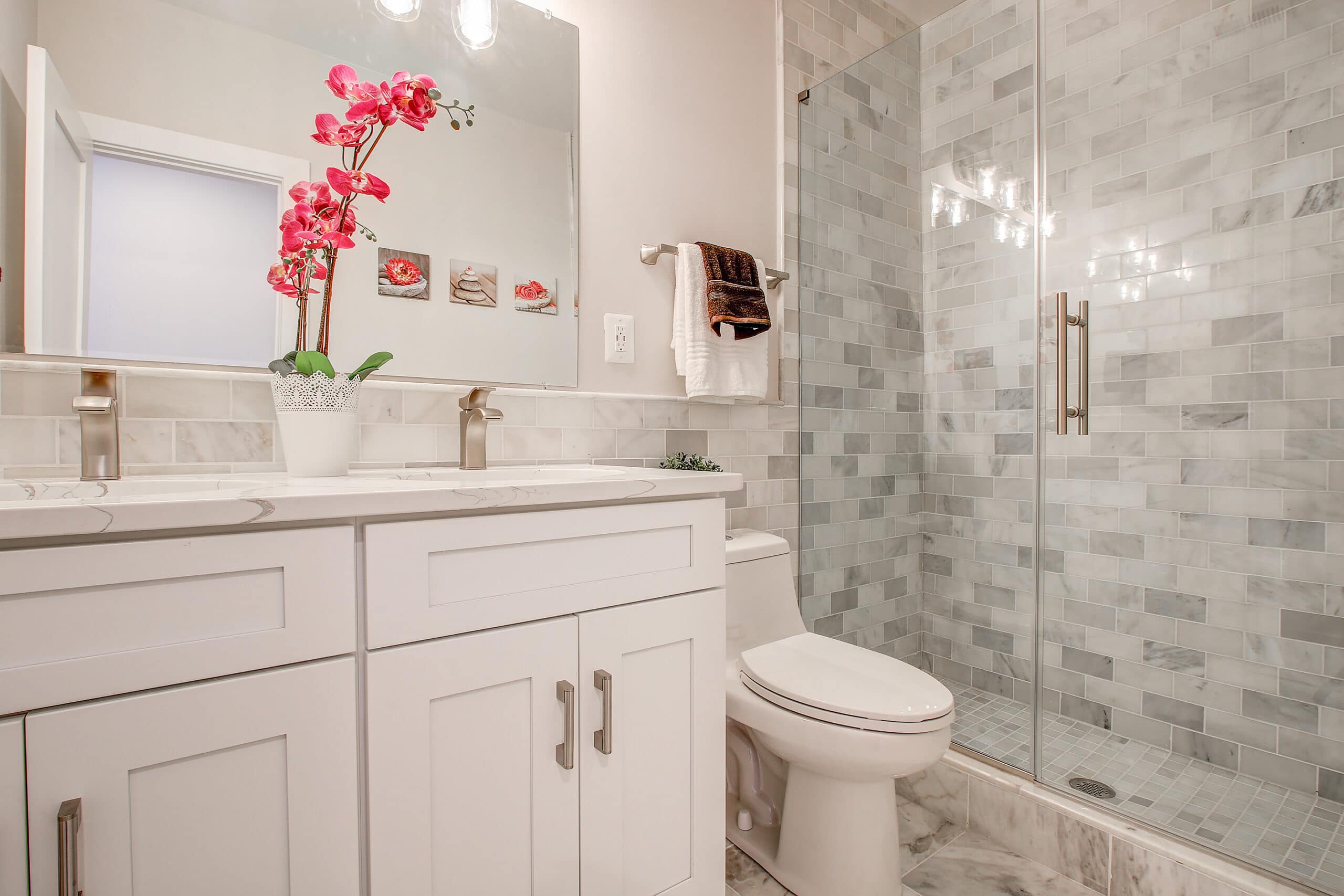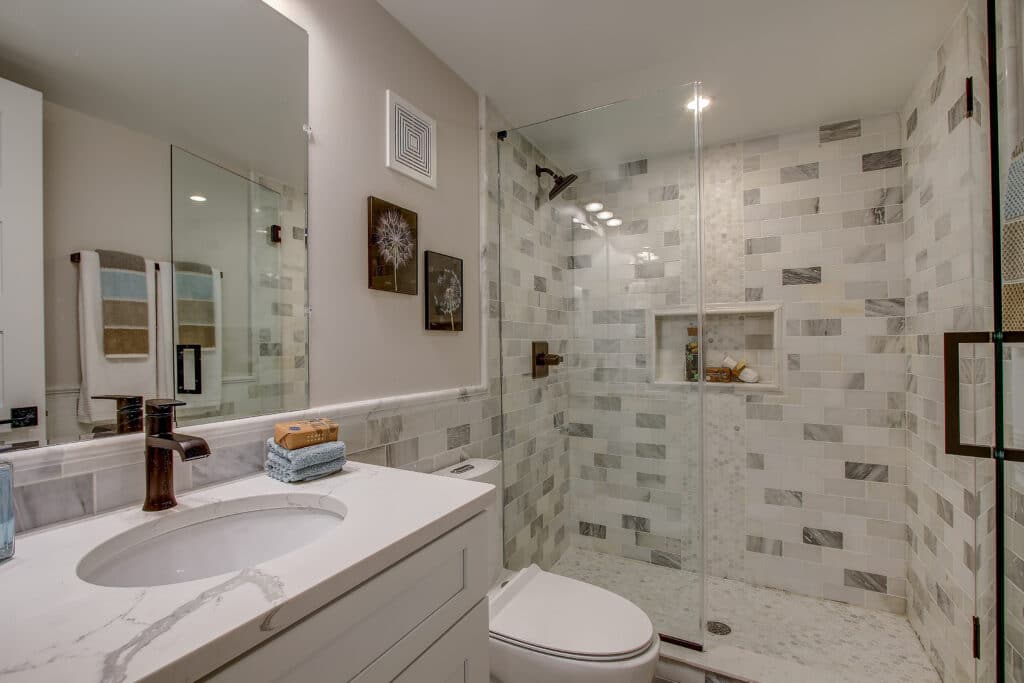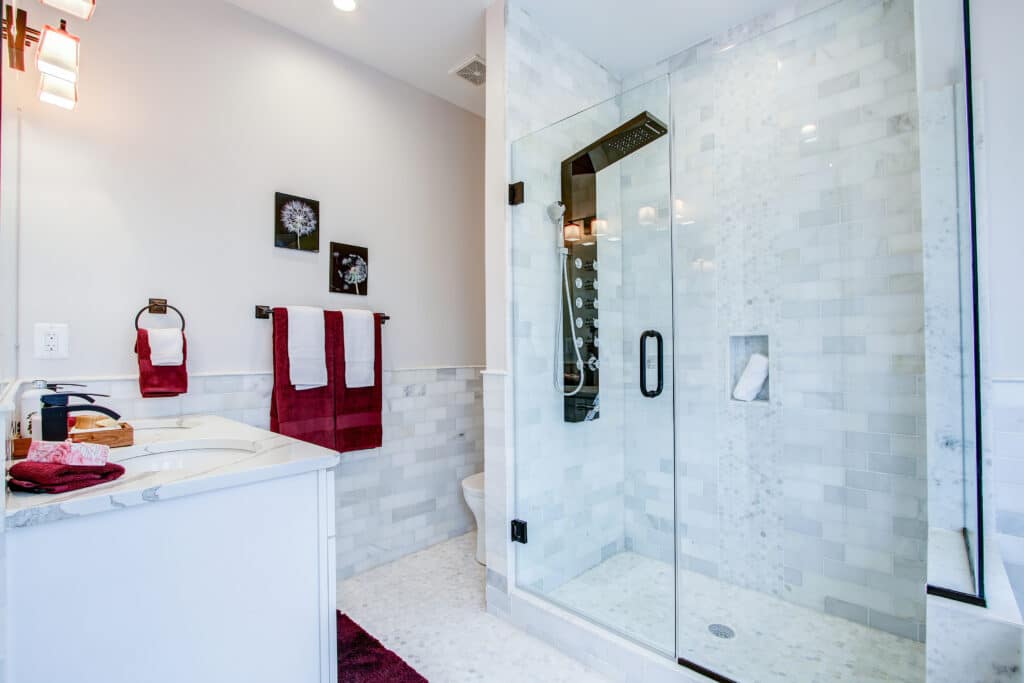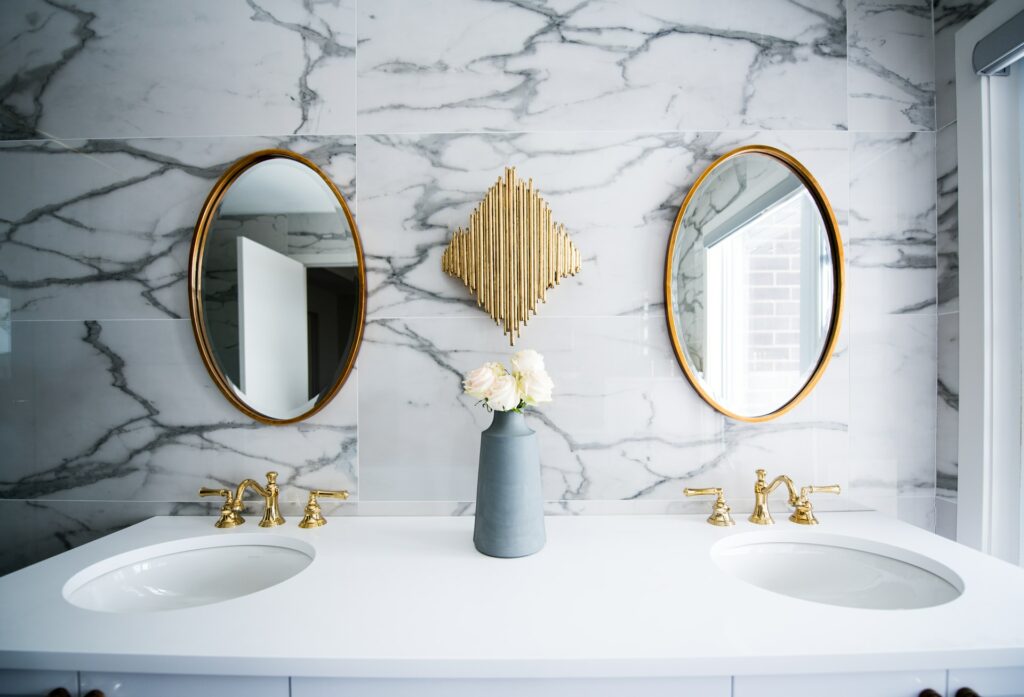
Bathroom Remodeling Process: Everything You Need to Know
A bathroom remodel is essential to spruce up your house. Even though it is one of the smallest rooms in the house, the entire bathroom remodeling process, however, can be very laborious and painstaking. The sheer compactness of the bathroom makes it quite tough to renovate. The few hundred square feet pose significant challenges to you and your contractor when you change the tiles, do the walls, install appliances, replace the plumbing, etc.
Remodeling one’s bathroom needs a significant amount of preparation and flexibility in the budget. But we assure you, your investment is worth the pain! A remodeled bathroom is a reflection of your style and also provides you the luxurious comfort at the same time. But all that is only when everybody has done their job right. So here is the step by step bathroom remodeling process that you must be aware of if you are thinking about a remodel.
Contents
Plan a Budget
Before you touch anything in your bathroom, you must plan what and how you want the things to go in there. To be able to set a budget for your bathroom remodeling project, you have to decide if you are going for just minor changes or a complete bathroom overhaul. That includes the design, décor, painting, fixtures, tiles, and accessories. You must also keep your budget flexible for any last-minute expenses.
Start Demolishing
After you have decided on the budget, you can start demolishing your bathroom. This process needs to be methodic, but the professionals don’t need to do it. Demolition involves removing the old tiles, flooring, fixtures and turning off the bathroom’s electricity and water supply. It is also essential to check for any water damage below the flooring and inspect any mold or mildew in the bathroom.
Plumbing and Electrical Rough-In
The next step is to replace and install plumbing such as the toilet flange, a new shower pan, add a waterline extension, and modify any plumbing needed to add the second sink. Once that is over, you can go for the wiring. Working on wires is much easier when the walls are open, so pay attention to that. Replacing the wiring and installing or relocating the outlets and exhaust fan should be the primary focus.
Close the Walls
It is time for you to close the walls after doing the plumbing and electrical work and added blocking for the grab bars if you need them. While completing the wall, install a cement board and vapor barriers in the damp areas of the shower stall and the tub. Cement board is helpful in moisture resistance for wall tiles. You can opt for drywall for the other walls of the bathroom.
Start Painting
Once all the work on your walls is over, it is time to start painting the wall and seal the deal. It is best to choose interior paint with a satin or semi-gloss finish to stand the humidity test. It is also crucial to paint your walls before installing the tiles, sink, vanity, toilet, tub, and other accessories to avoid splashing of paint and the mess it creates. Once your walls’ painting is over, you can start focusing on the tiling and the appliances.
Install the Tiles
It would be best to tile the shower walls or the bathtub enclosure before you start tiling any other bathroom area. Then you may go for the installation of the wall tile, and then finally the flooring.
You may use grout to stick it on or place it correctly for both the wall tiles and the floor tiles. But do caulk the corners. Grout is mostly available in a variety of colors in any bathroom décor shops.
Lodge the Shower Doors
After setting the shower floor and wall tiles tightly, you may install the shower door for the enclosure, the track door for the bathtub, or the shower curtain rod to hang the curtains around the cubicle. This step brings you closer to sealing the shower remodel part of the bathroom correctly.
Fit the Lighting Fixtures and Exhaust Fans
After all the fundamental steps are over, you may start working on your lighting fixtures. A good bathroom deserves to have good lighting, soft, but bright enough to light up the place. Lights directly over the sink provide better lighting while dressing up. A lot of bathrooms have both wall lights as well as ceiling lights.
Apart from lighting, the other electrical work that one needs to do in the bathroom is to install exhaust fans. The fans help keep the air clean and hygienic in the bathrooms.
Add the Sink and Vanity
After the electrical work, the next step of the bathroom remodeling process is the plumbing. You can get the sink and the vanity into position and hook up the plumbing to these new fixtures. Installation of the sinks and vanities is not a very hard task and can be done by oneself. However, connecting the plumbing to these fixtures may need a professional to chime in if you need the job done right.
Install the Toilet
Installing the toilet is the easiest part of a bathroom remodeling project. You would not need a professional contractor for supervision or subcontractors to do it for you. The guidelines to set up a toilet are readily available online, and if you go through it thoroughly, you can easily do it yourself. But if you want expert work, you may hire people to do it for you, and you can supervise them yourself after going through the installation guide for your satisfaction.
Add the Accessories
Once everything else in the washroom is over, such as the tiling, flooring, plumbing, and all the installations, you reach the last part of the bathroom remodeling process, which is adding the accessories. Finish up your bathroom remodeling project by installing towel bars, shelves, light switch plates, and any other accessories of your choice that you wish to have in your bathroom.




